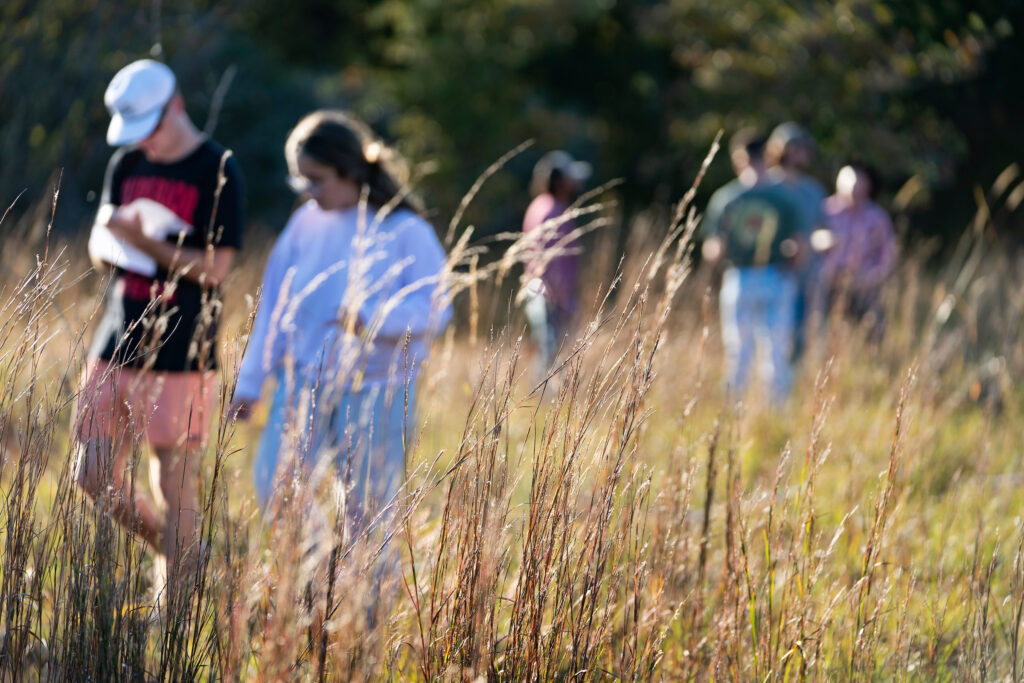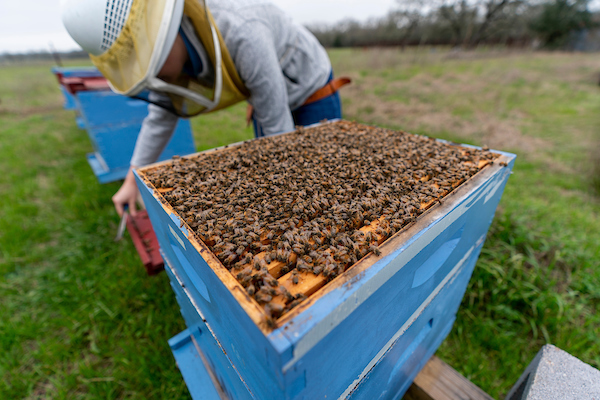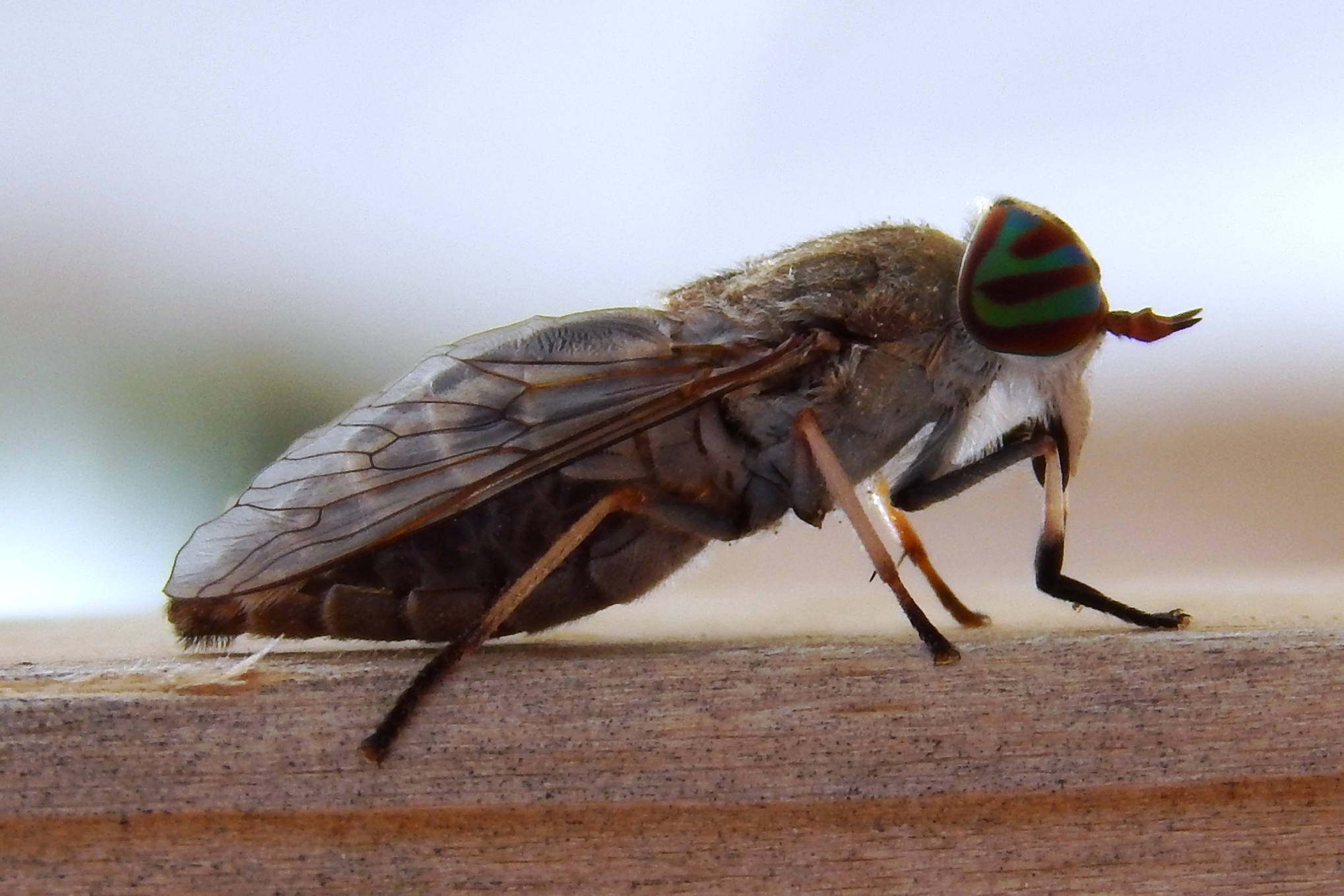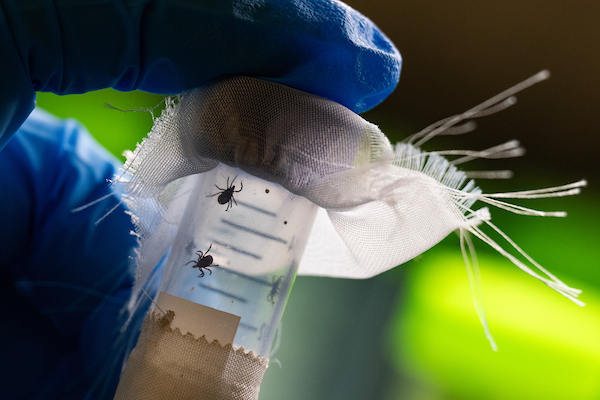Chigger season tips to beat the itch
AgriLife Extension entomologist talks all things chiggers, from why they make you itch to ways to avoid them
If you’ve ever dealt with a bug bite, especially the annoying itchiness of chigger bites, you will want to be ready to avoid them the next time you are outdoors.
Chiggers are the larval stage of a group of mites containing many species found around the world. The six-legged larvae are generalist parasites and feed on lizards, birds and small mammals like mice and rabbits. However, as many of us know, they are not limited to those animals. The other stages of the chigger life cycle – nymphs and adults – are predators of other very small mites and insects.
There are a few things people should know about these tiny biting pests that might help them avoid a big itch, said Bryant McDowell, Texas A&M AgriLife Extension Service integrated pest management program specialist and entomologist in the Department of Entomology in the Texas A&M College of Agriculture and Life Sciences.
McDowell has already received several calls about chiggers from curious Texans. He expects the number of people suffering from chigger bites will increase as spring wraps up and we enter the summer season.
“Last year, it seemed like chigger outbreaks came earlier in the year, but late spring and early fall are really their prime seasons,” he said. “Anytime you mix temperatures above 80 degrees and moisture, that is the recipe for chigger infestations.”

What you need to know about chigger bites
Victims of their bite know the unrelenting itch that follows. But they may not know the details of how these pests spread their misery.
These near-microscopic mites hitch a ride, where they move along their host’s body to a feeding site and attach to the skin. Chiggers tend to settle in areas where clothing fits tightly to the body like socks and waistlines or in moist areas like armpits or behind the knees. They have a knack for concentrating in especially bothersome places.
They do not burrow into the skin, nor do they feed on blood. Instead, they inject saliva into the upper layers of the skin. The saliva contains enzymes that dissolve skin cells enabling the attached chigger to suck up the dissolved cells and lymph.
Over the chigger’s feeding period, the process of salivation and drinking or sucking of the dissolved skin cells is repeated many times creating a tiny tube through the skin layers.
Our bodies react to the enzymes and feeding process with an itching, allergic reaction producing inflammation typically with redness, swelling and sometimes welts.
Treating the itch
The itch and other reactions to the chigger bites typically occur several hours after the chiggers have fed and detached. Thus, we are left with treating the itch, inflammation and potential secondary infections with over-the-counter medications.
The bites are itchy for a few days and can take up to two weeks to disappear, McDowell said.
Chiggers typically exit the host soon after they’ve fed and do not burrow into the skin. Because of this, he said the home remedy of applying nail polish to suffocate them or bleach to kill them will only potentially add to the skin irritation.
“There are a number of ways you can try to relieve the itch, but once you’re bitten there is no stopping the reaction,” he said. “The deal is done. So, the best practice is avoidance and prevention.”
Don’t be a victim: avoid chigger bites
Avoiding habitats with high probabilities of supporting chiggers, using preventive measures with repellents, appropriate clothing and post-exposure cleansing can reduce the impacts of chiggers.
Chigger infestations can be random, “wrong place at the wrong time,” occurrences for hikers, trail walkers or anyone venturing off the beaten path, McDowell said. Often, they prefer undisturbed, unkept areas with taller grasses, vines and other low-growing plants. The vegetation provides cover for host animals of chiggers and protection from sunlight and heat.
McDowell said those overgrown areas, especially when combined with moisture, can create ideal conditions for infestations. So, he cautions about areas with tall grass around ponds, creeks and rivers as they could be problematic. Managing vegetation to prevent chigger harborage in areas with high human use such as parks or around homes can reduce exposure. But occasionally even manicured lawns can harbor chiggers under the right conditions, McDowell said.
Taking care when returning indoors
Given their randomness, he suggests removing clothes worn outdoors and showering as soon as you get home from any trek through taller grass or after activities in areas that might be hospitable to chiggers. Use a washcloth or something abrasive that will scrub them away.
Quick action can reduce the number and severity of bites.
“If you’ve been in an area that you think might have chiggers, the best thing to do is to take a shower as soon as possible,” he said. “Scrubbing with soapy water will take care of any chiggers on your body, but again, it may be too late to address bites that occurred.”
To reduce the chances of exposure to chiggers, McDowell recommends wearing long pants, tucking pant legs into socks, and using repellents or deterrents like DEET, sulfur powder or plant-based oils. Permethrin-based products can be used on clothing for a longer residual. These products should not be applied to the skin and only directly applied to clothing and allowed to dry before wearing.
More information on controlling chiggers is available to download.





